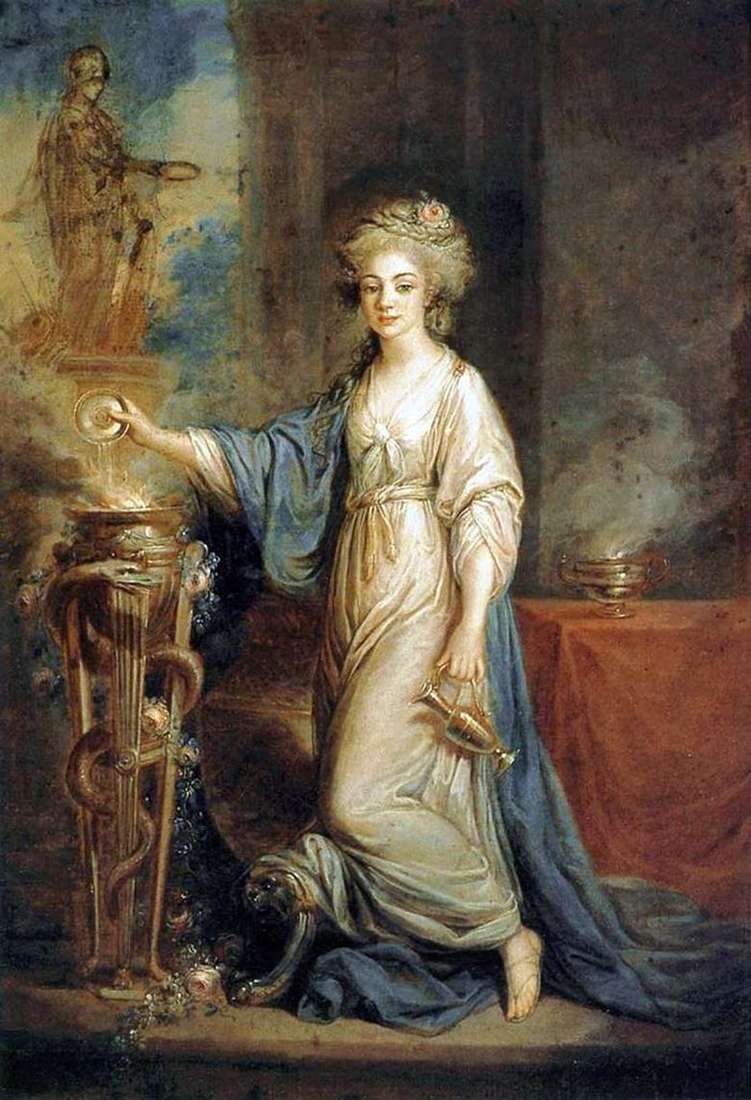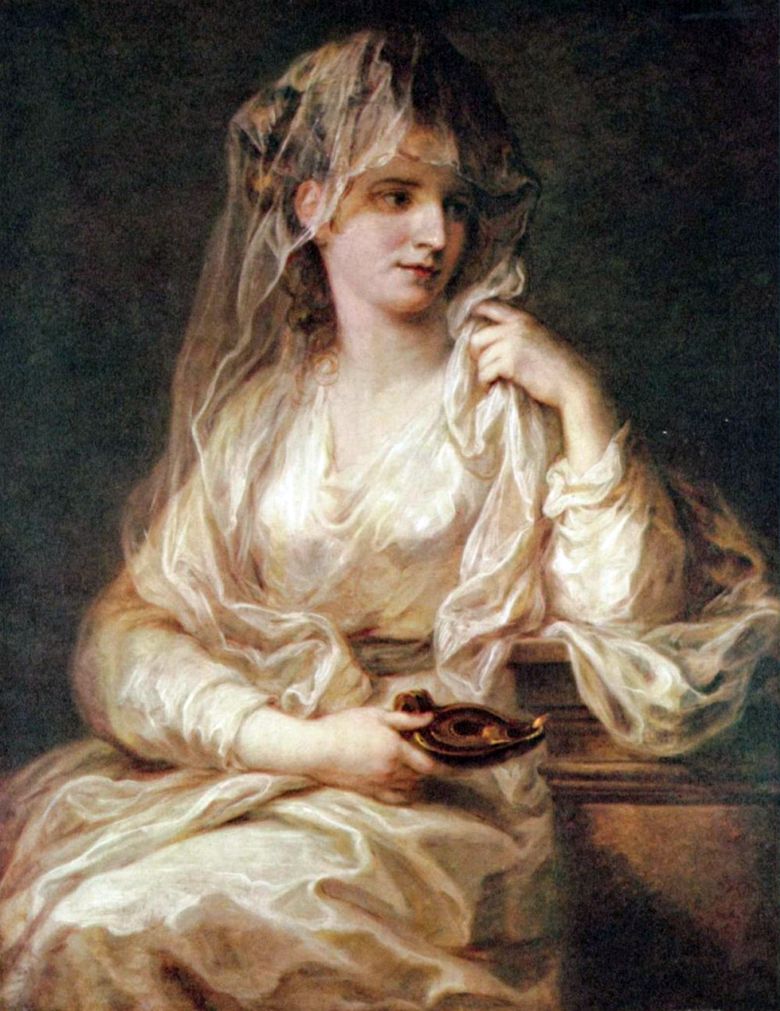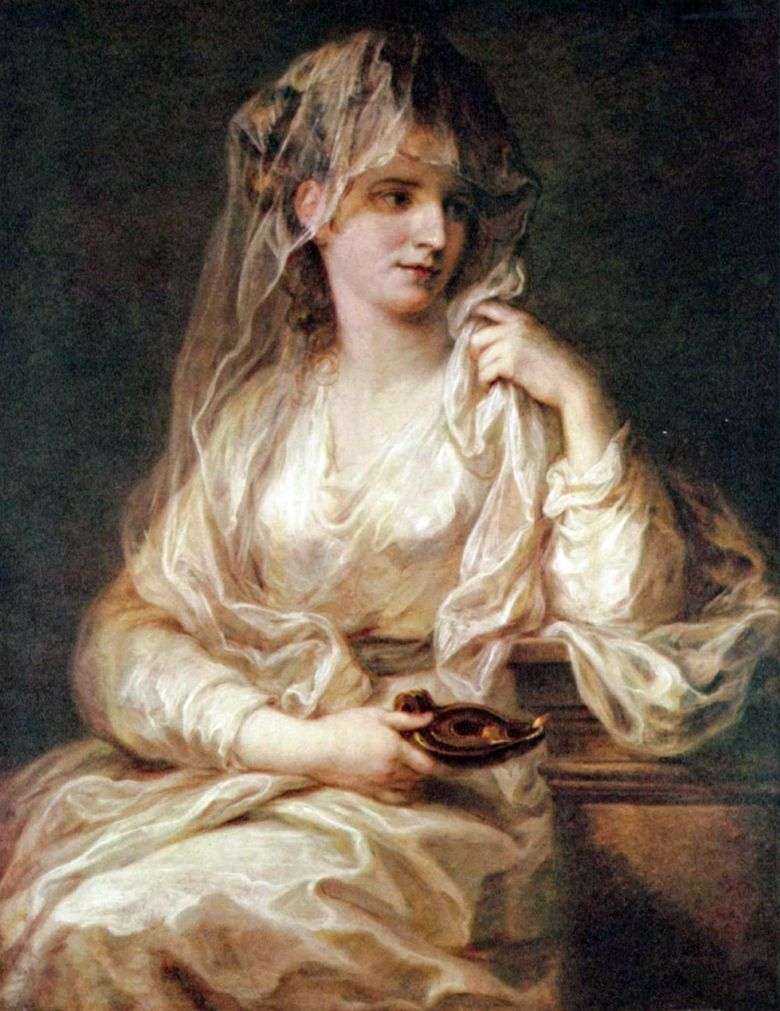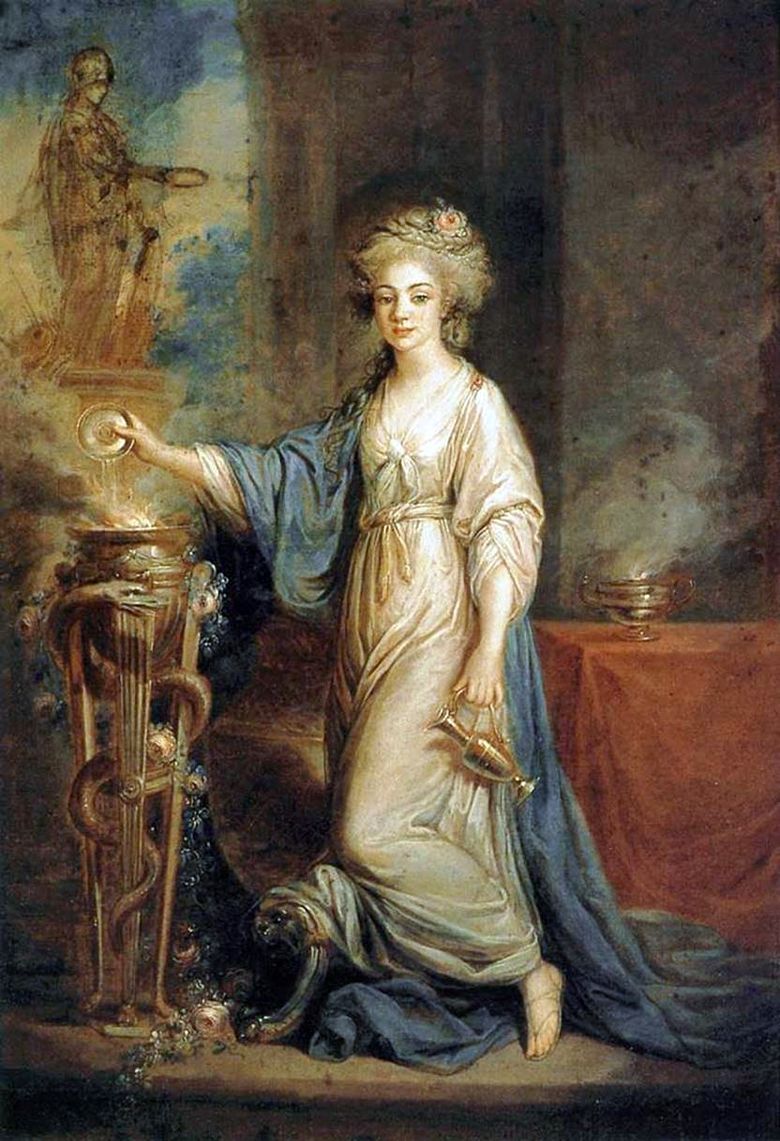
Painting of the Swiss master of neo-classicism painting Angelika Kaufman “The Young Vestal”. The size of the picture is 60 x 41 cm, canvas, oil. Vestalks are the priestesses of the goddess Vesta, who were originally four, and then six. Vesta in Italy, Hestia in Greece – was considered a goddess-patroness of the family hearth and sacrificial fire. Vestals were elected by the kings, and under the republic – by the high priest, by lot, out of twenty girls.
From entering the Vestal, it was required: patrician origin, age not younger than 6 and not older than 10 years, absence of bodily defects and, finally, the presence of both parents in Italy. From the duty of Vesta’s ministry, the girl could be released only for special family reasons.
Each vestal was to remain in office for 30 years, counting from the day of election; The first 10 years she studied, the second served, and the latter taught others. After this time she was free and had the right to marry; but the latter was extremely rare, because there was a belief that marriage with the Vestal does not lead to good. At the head of the vestals was the oldest of them, who received orders directly from the chief high priest.
The duties of the Vestal, apart from strict chastity, consisted mainly in supporting the sacred fire, in keeping the temple clean, in performing sacrifices to the goddess Vesta and penates, in guarding the palladium and other shrines. The main holiday in honor of Vesta in Rome was called vestalia and was celebrated in June.
During the Vestal, the Romans made barefoot pilgrimage to the temple of the goddess and sacrificed her here. Violation of the vow of innocence was punished by the Vestals by burying them alive in the ground on Campus Sceleratus, and the seducer was marked to death. Vestal, guilty of fading sacred fire, was punished with rods.
 Portrait of a Lady in Vestal Apparel by Angelika Kaufman
Portrait of a Lady in Vestal Apparel by Angelika Kaufman Joven vestal – Angelika Kaufman
Joven vestal – Angelika Kaufman Portrait d’une dame dans le vêtement vestal – Angelika Kaufman
Portrait d’une dame dans le vêtement vestal – Angelika Kaufman Retrato de una dama con una túnica vestal – Angelika Kaufman
Retrato de una dama con una túnica vestal – Angelika Kaufman Jeune vestale – Angelika Kaufman
Jeune vestale – Angelika Kaufman Portrait of a young woman by Angelika Kaufman
Portrait of a young woman by Angelika Kaufman King Ferdinand IV with his family by Angelika Kaufman
King Ferdinand IV with his family by Angelika Kaufman Miranda and Ferdinand by Angelika Kaufman
Miranda and Ferdinand by Angelika Kaufman